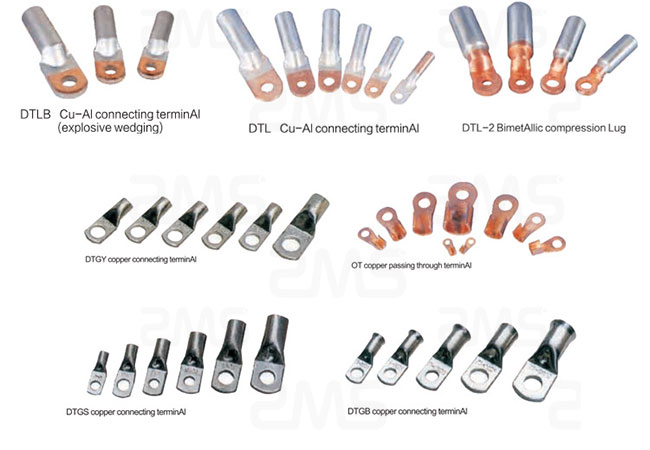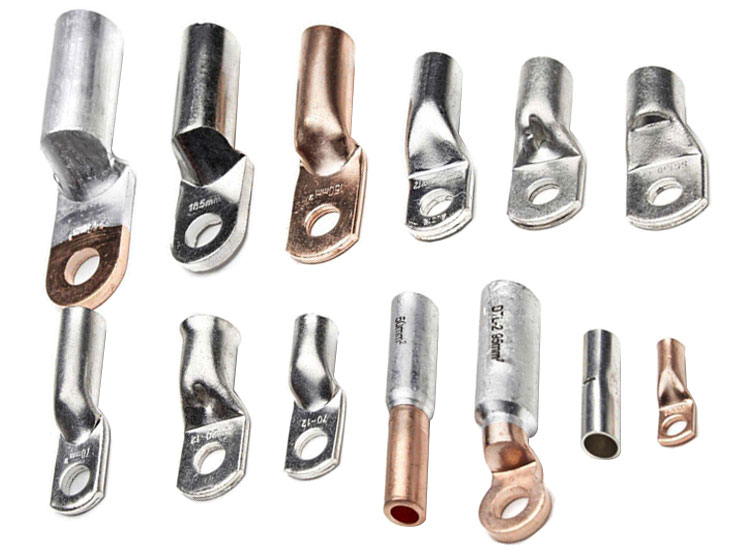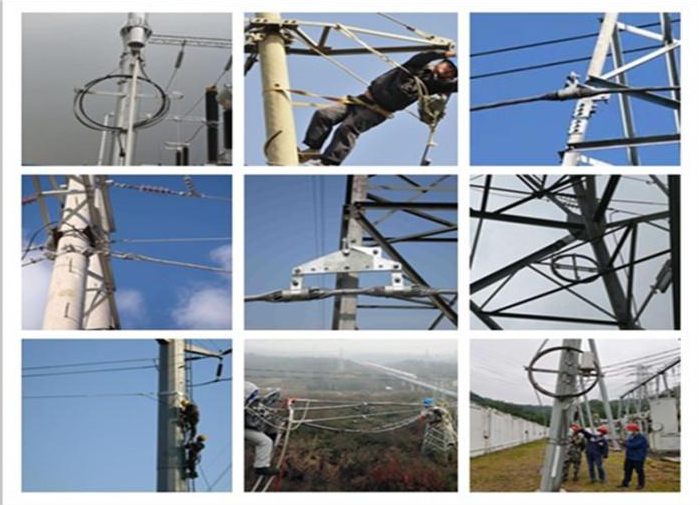In the intricate network of electrical systems, cable lugs play a crucial role in ensuring efficient transmission of power. These small but significant components connect cables and various electrical devices, providing a secure and reliable connection. ZMS believes that understanding the types, applications, and significance of cable lugs is essential for ensuring the safety and effectiveness of electrical installations across diverse industries.
What are Cable Lugs?
Cable lugs, also known as cable connectors or cable terminals, are mechanical devices used to terminate and connect electrical cables to electrical equipment or systems. They are typically made of conductive materials such as copper or aluminum and are designed to facilitate the transmission of electrical current while ensuring a secure and stable connection.

Cable lugs come in various shapes, sizes, and configurations to accommodate different types of cables and electrical components. They are available in insulated and non-insulated forms, depending on the application’s specific requirements.
Types of Cable Lugs
1. Crimp Type Cable Lugs
Crimp type cable lugs are among the most commonly used variants and are designed to be crimped or compressed onto the conductor of the cable. They feature a barrel or sleeve that encloses the stripped end of the cable, which is then compressed using a crimping tool to create a tight and secure connection. Crimp type lugs are available in various configurations, including ring, fork, and spade terminals, to suit different connection needs.
2. Compression Type Cable Lugs
Compression type cable lugs utilize a compression mechanism to establish a strong and reliable connection between the cable and the terminal. Unlike crimp type lugs, which rely on mechanical pressure to secure the connection, compression lugs employ a hydraulic or mechanical compression tool to compress the lug onto the cable. This ensures a uniform and high-pressure connection, making compression lugs ideal for applications where reliability and longevity are critical.
3. Solder Type Cable Lugs
Solder type cable lugs feature a soldering tab or terminal that is attached to the cable conductor using soldering techniques. The solder creates a permanent bond between the lug and the cable, providing excellent conductivity and mechanical strength. Solder type lugs are often used in applications where high temperatures or environmental factors may compromise the integrity of crimp or compression connections.
4. Tubular Cable Lugs
Tubular cable lugs, also known as barrel lugs, consist of a hollow cylindrical barrel that accommodates the stripped end of the cable. The barrel is typically crimped or compressed onto the conductor to establish a secure connection. Tubular lugs are widely used in power distribution systems, industrial machinery, and automotive applications due to their versatility and reliability.

5. Insulated Cable Lugs
Insulated cable lugs are equipped with an insulating sleeve or cover that protects against electrical shock and short circuits. The insulation material, such as PVC or nylon, encases the metal lug, preventing contact with other conductive surfaces. Insulated lugs are commonly used in applications where there is a risk of accidental contact with live conductors, such as in residential wiring and electrical panels.
Applications of Cable Lugs
Cable lugs find widespread applications across various industries and sectors where electrical connections are required. Some common applications include:
1. Power Distribution Systems
In power distribution systems, cable lugs are used to connect power cables to transformers, switchgear, circuit breakers, and other electrical components. They ensure efficient transmission of electricity from the source to the load, minimizing power losses and ensuring reliable operation.
2. Industrial Machinery
Industrial machinery and equipment often require intricate electrical connections to function effectively. Cable lugs are used to connect cables to motors, generators, control panels, and other electrical devices, providing the necessary power for operation.
3. Renewable Energy Systems
With the increasing adoption of renewable energy sources such as solar and wind power, cable lugs play a vital role in connecting solar panels, wind turbines, and inverters to the electrical grid. They facilitate the transfer of electricity generated from renewable sources to homes, businesses, and utilities.
4. Automotive Industry
In the automotive industry, cable lugs are used in various electrical systems, including engine wiring, battery connections, and vehicle electronics. They ensure reliable power delivery to essential components such as starters, alternators, and ignition systems, enhancing the overall performance and efficiency of vehicles.
5. Telecommunications
Telecommunication networks rely on cable lugs to establish connections between communication cables, transmission equipment, and network infrastructure. Whether it’s fiber optic cables, coaxial cables, or twisted pair cables, cable lugs play a crucial role in maintaining signal integrity and ensuring seamless communication.
Significance of Cable Lugs
The significance of cable lugs in electrical systems cannot be overstated. Here are some key reasons why cable lugs are essential:
1. Safety
Cable lugs help ensure the safety of electrical installations by providing secure and reliable connections. Properly installed lugs reduce the risk of electrical faults, short circuits, and fires, thereby protecting personnel and property from harm.

2. Reliability
By establishing robust electrical connections, cable lugs contribute to the reliability and efficiency of electrical systems. They minimize power losses, voltage drops, and interruptions, ensuring uninterrupted operation and optimal performance.
3. Versatility
Cable lugs are available in a wide range of sizes, configurations, and materials to suit diverse applications and requirements. Whether it’s a high-voltage power transmission line or a small-scale electronics project, there is a cable lug solution available to meet the specific needs of the application.
4. Longevity
High-quality cable lugs are designed to withstand environmental factors such as temperature variations, moisture, corrosion, and mechanical stress. This ensures longevity and durability, reducing the need for frequent maintenance or replacement of electrical connections.
5. Efficiency
By providing efficient transmission of electrical current, cable lugs help minimize energy losses and optimize the performance of electrical systems. This translates into cost savings for businesses and consumers by reducing energy consumption and improving overall system efficiency.
Conclusion
Cable lugs play a critical role in the functioning of electrical systems across various industries and applications. From power distribution systems to automotive electronics, these small but indispensable components ensure the safe and efficient transmission of electrical power. By understanding the different types, applications, and significance of cable lugs, engineers, electricians, and technicians can make informed decisions to ensure the reliability and safety of electrical installations. As technology continues to evolve, cable lugs will remain essential components in the intricate network of electrical connections that power our modern world.
